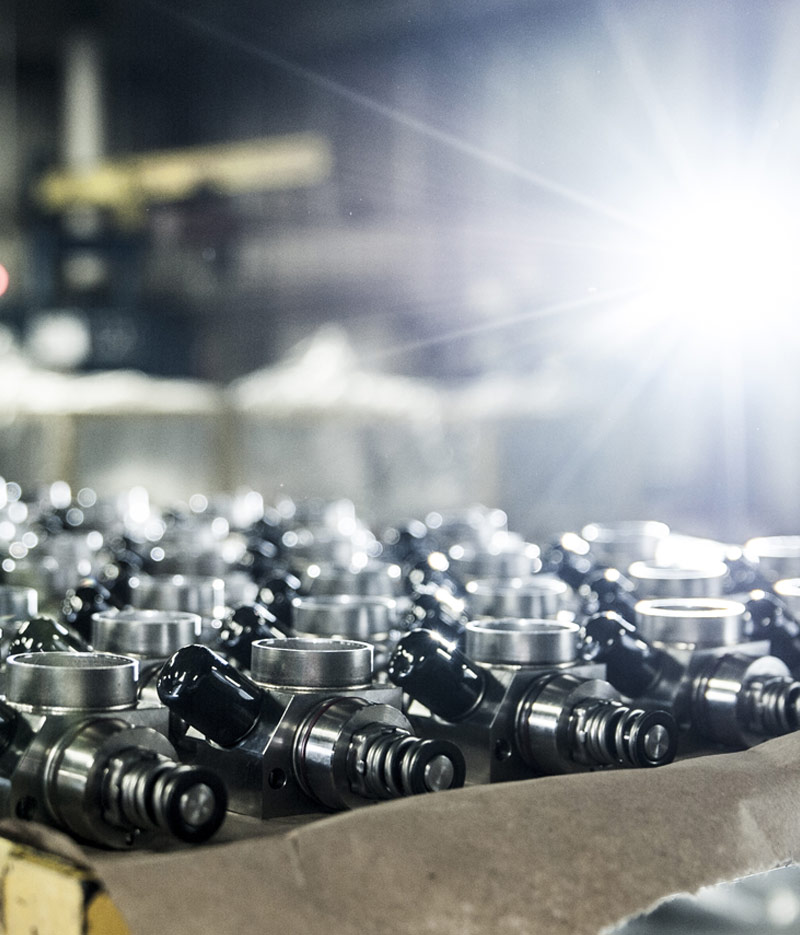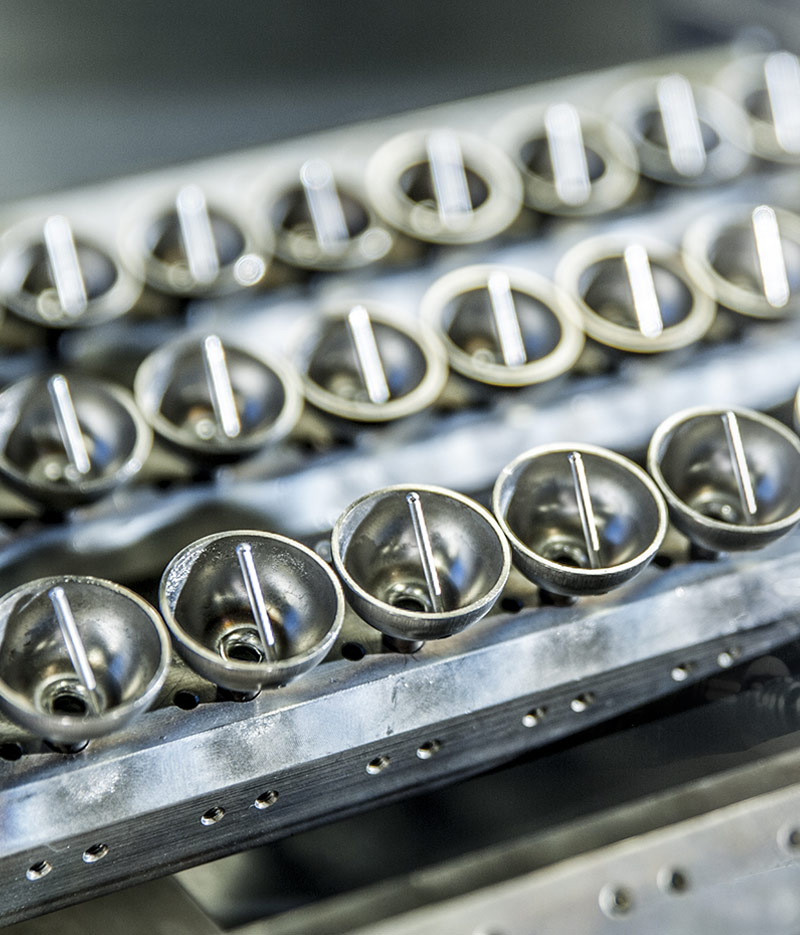Electron Beam Welding (EBW) is a fusion process in which a beam of high-velocity electrons is applied to the materials being joined. As the electrons strike the work surface, their energy is converted into heat, instantly vaporizing the metal, creating a keyhole.
The heat penetrates deeply, making it possible to weld thicknesses over 2 inches and still capable of welding foils, which is typically not possible with most other welding processes. Because the electron beam is tightly focused, the total heat input is magnitudes lower than most processes including Laser Welding. SWS-Trimac performs Electron Beam Welding at vacuum levels greater than 1 micron to prevent dispersion of the electron beam. As a result, the effect of welding on the surrounding material is minimal and the heat-affected zone is small, distortion is slight, and the work piece cools rapidly.
The electron beam can be finely focused to .008” beam spot sizes offering very deep yet narrow signatures with depth to width ratios of 20:1, conversely, the beam can be defocused to create a larger beam spot resulting in wider weld signatures for applications that demand precise weld widths at specified depths. The beam may also be oscillated or stirred to create an array of possibilities depending weld settings, tailored to your application needs.


The Electron Beam Welding process is used to weld many alloys; most commonly welded are stainless steels, aluminum, titanium, copper, super alloys, reflective and refractory metals.
Electron Beam Welding is also widely used to perform welds on a variety of dissimilar metals combinations such as carbon Steel to Bronze, Aluminum to Silver, Copper to Inconel, just to name a few.
Electron Beam Welding is typically performed by manipulating the work piece under a stationary stream of electrons. Tooling is critical to the success of the welding process as part repeatability and accuracy is very important.
SWS-Trimac offers Engineering services to aid in weld joint design and proved necessary Machining Services to support the build of tooling and fixtures to assure welding success.
SWS-Trimac complies to many Electron Beam Weld Specification & Standards, most are Aviation and Medical standards which are proprietary and cannot be listed. Public specifications commonly certified to are listed below.
AMS 2681
AWS D17.1
MIL-W-46132
AMS 2680
MIL-STD-1595
ISO 13919
Electron Beam Welding may be considered a similar process to Laser Welding, except that electrons are focused instead of photons in the case of lasers. The advantage of using an Electron Beam is that the beam does not tend to diverge as laser beams do when they contact the work piece this allows for deeper penetration with equivalent energy offering less part distortion.
Electron Beam Welding in a vacuum offers a pure welding environment ideal for applications with stringent sub-surface inspection criteria as most laser welding is done in atmosphere with the assistance of an inert gas used as shielding.
We strive to be your path of least resistance. Often times, solutions do not always come easy. But, our perseverance in investigating alternative joint designs, fixturing, manufacturing techniques and materials, pays off!
Contact us and see how we can help.
© 2020 All rights reserved | SWS Trimac INC.